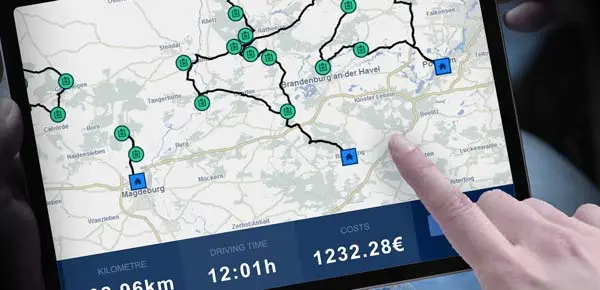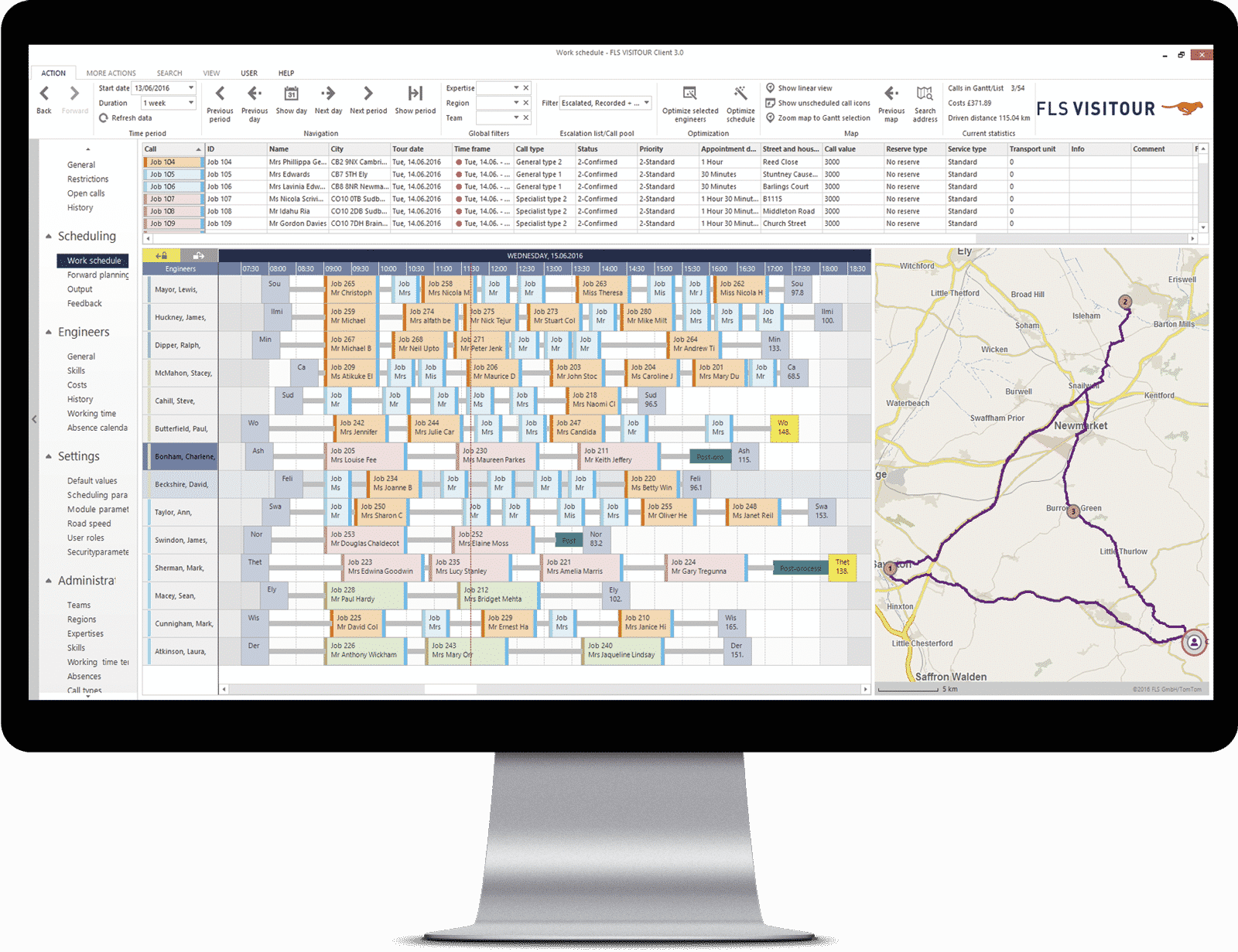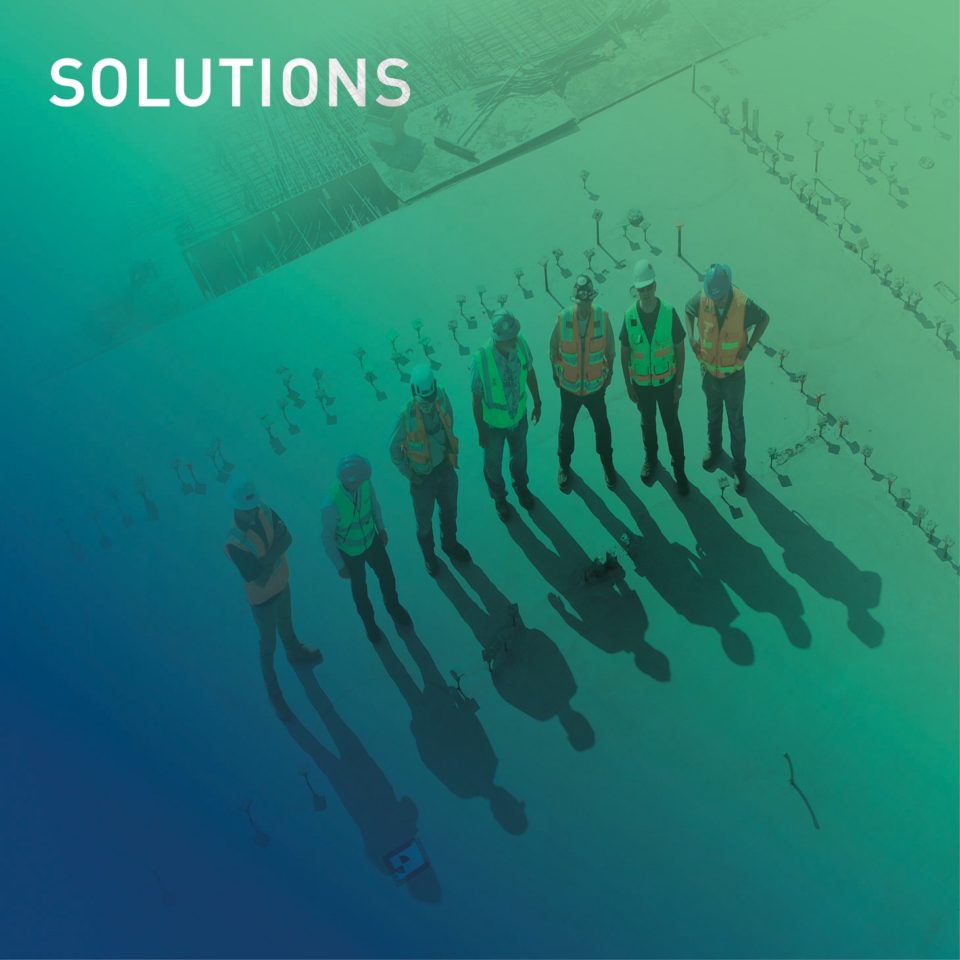
BLOG / SOLUTIONS · FLEET ROUTE OPTIMISATION SOFTWARE
REAL-TIME ROUTE OPTIMISATION SOFTWARE: FEATURES FOR FLEETS
11 October 2023 · James Alex Waldron
Integrating technologies such as telematics, GPS tracking, and fleet management software brings its own rewards. Ensuring these technologies work seamlessly together is vital for effective fleet operations, yet these solutions satisfy only a half of the productivity opportunity.
Genuine resource optimisation requires real-time route optimisation.
DO I NEED ROUTE OPTIMISATION SOFTWARE?
Inflationary pressures are tightening budgets in recruitment, parts, and fuel expenses, making efficiency and productivity a critical focus across your fleet's field operations.Operators with dynamic fleet requirements, and with numerous field operatives, find point-to-point route planning faces limitations. Unforeseen events like staff absences, appointment cancellations, or emergency deployments frequently disrupt plans throughout shifts. Effective management of fleet operations demands a solution that not only assists dispatchers to plan with transparency, but also allows for swift and adaptable reoptimisation to meet evolving situations. Dispatchers must have the ability to see why a routing decision has been made.
WHY DOES MY FLEET NEED ROUTE OPTIMISATION SOFTWARE?
Fleet management software includes features such as driver behavior and fuel monitoring, plus performance metrics and compliance reporting (such as driver working hours). Some of these fleet solutions also include rules-based allocation for scheduling and routing. These are generally lightweight, and do not produce the same results that an optimisation algorithm can generate.For example, an optimisation algorithm considers a every level of cost, SLA, and KPI factors, right back to the initial work order and the dispatch. Without optimised scheduling, embedded route plans cannot be calculated for the best outcome.
Read more: How Wolf Heating Technology drives 10% fewer miles every year
WHAT ARE THE FEATURES OF FLEET ROUTE OPTIMISATION SOLUTIONS?
Route optimisation software generally provides three pillars under one solution. Dynamic, algorithm-based route planning can greatly reduce fuel costs, emissions, and wasted time for a significant increase in completed orders per driver per day. Whether the dispatch, in-day field service management, or reporting and audit, ultimately, it is the control and balance of resources. Whilst not exhaustive, this list should provide a checklist of the most in-demand software features:PILLAR 1
OPTIMISED DISPATCHING
Automated Dispatch Management - Dispatchers are tasked with distributing orders and appointments optimally among the available resources (drivers or vehicles) during planning, whether for the day or further into the week. The software handles orders and assignments in the most efficient way, ensuring a high level of customer service and field service value.The fleet dispatch software considers all constraints and organises orders with routes to enhance customer and employee satisfaction. It strikes the right balance between costs and benefits, maximising the effectiveness of your field staff and service outcomes.
Route Optimisation - Dynamic routing is the term given when multiple intermediate appointments need to be reached at specific times within the shift. This is commonly encountered in field services such as technical orders, repairs, assembly, or timed deliveries. In such cases, the planning doesn't revolve around a single major destination but instead involves several customers and/or depots.
This distinction becomes crucial when considering route planning versus tour planning. Dynamic route planning typically involves grouping orders into tours and determining the sequence in which they should be approached. The driver and/or vehicle returns to a starting position after completing the final order in the tour. In contrast, a route usually denotes travel from a starting point to a specific destination, representing transport from point A to point B with little consideration of knock-on effects.
Read more: LOGISTICS UK increases daily productivity per field operative
Driver Management – Over and above working hours, digitalised scheduling calculates the estimated time required to realistically complete an order. Embedded driving routes are meticulously planned based on road types, vehicle specifications, and varying driving speeds across the different times of the day. All information is stored. Geocoded location data (beyond postcodes), provides fleet dispatchers with access to detailed location and parking information. Dispatchers can pull CRM/ERP data from tickets or previous site visits to mitigate lone worker risks, ensuring safety.
Compliance and Regulations Management – Only certified employees can be assigned to specific work orders. Safety instructions are directly communicated to field employees through a dedicated live app, facilitating two-way communication. Inventory items, including original/OEM parts and equipment are tracked with the ticket.
Read more: Solve EV Range Anxiety with Dynamic Fleet Routing
PROVEN VALUE WITH A SCHEDULING TEST
How can Project Teams ensure their Field Optimisation Software shortlist stands up to their SLA objectives? What must you demand from a considered provider? This critical stage of the selection process must be completed before final evaluation and contract.Your data and the most important test for route optimisation software.
PILLAR 2
REAL TIME MONITORING AND MANAGEMENT
Live Driver Tracking – Your fleet will inevitably encounter unforeseen delays and cancellations. While these setbacks are unplanned, how you react remains entirely within control. Inefficient routing and dispatching results in rescheduling earlier appointments without considering any idle time created within your fleet operations. You might send the next available operative to an order in a different area, leading to wasteful use of time and CO2 emissions. Without live tracking across your fleet, you’re inviting a loss of revenue.Alerts/Notifications – Embedded route planning prevents the risk of extended working hours and driver fatigue. It takes into account resource availability, work/job type, and SLAs, adjusting schedules for optimised utilisation and productivity. During the shift, notifications for arrival, departure, and onward travel are sent to relevant parties. Automated alerts are created if the driver is running late due to traffic. This form of risk management feeds in-shift reoptimisation.
In-shift Route Optimisation - Only an algorithm can eliminate human errors and reduce the significant administrative pressures on dispatchers. FLS VISITOUR, built on the PowerOpt platform, adapts to changing in-shift conditions within seconds, regardless of their complexity. The entire fleet's tour, with embedded routing, is therefore reoptimised for the best outcome.
Read more: A protected field force with field service safety software
PILLAR 3
INTEGRATION AND SCALABILITY
Cloud hosting – With seamless access to integrated cloud processing, analysing and optimising the complete picture in real-time has become simpler than ever. Integrating data between CRM and ERP systems facilitates the creation of high-quality live dashboards. Moreover, since there's no need for additional space or effort for hosting, a cloud-based route planning solution effortlessly scales to meet your fleet’s future requirements.Data Analytics and Reporting – Route planning software available in the cloud allows fleet businesses to optimise their processes seamlessly during ongoing operations. Introducing software is not merely about boosting efficiency; it significantly enhances accuracy as well. Head office teams deliver quicker, precise, and transparent reports, and the solution has room to adjust to your future workflows.
YOUR JOURNEY TO FLEET PRODUCTIVITY
To gain an understanding of tools to optimise the field experience for your workforce and customers book a short discussion or contact us at info@fastleansmart.com.Discuss your options with our telematics partner Webfleet Solutions or watch our webinar on-demand.
Read more:
Solve EV Range Anxiety with Dynamic Fleet Routing
Route planning with FLS VISITOUR
Route Scheduling: Outpacing timesheets and Excel
Route planning SaaS: Your competitive advantage
Cost control: Reactive maintenance with Field Service Management software

JAMES ALEX WALDRON
UK Marketing Manager
+44(0) 1183 800189
Send email
James Alex Waldron has worked in written communications for over 15 years. Since 2021, he has written for FLS and the Solvares Group on the topics of digital field service transformation and mobile workforce manageMent, and regularly provides insight to the industry press.





